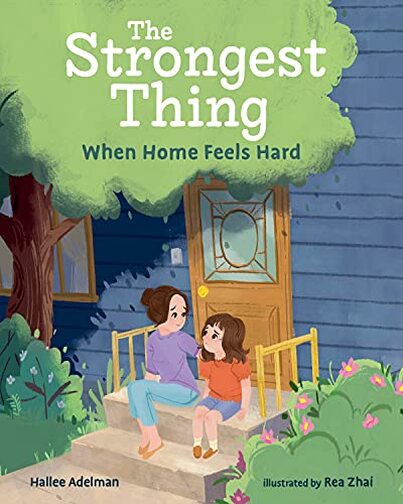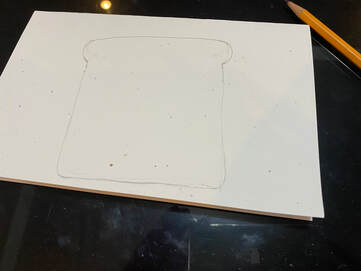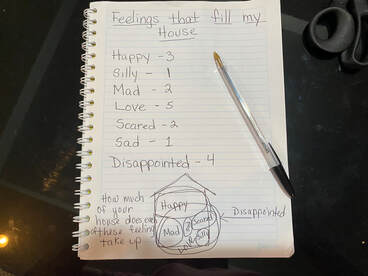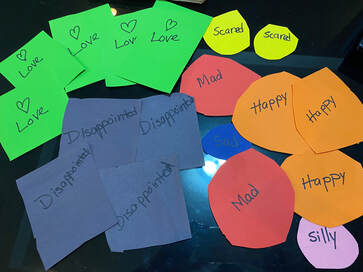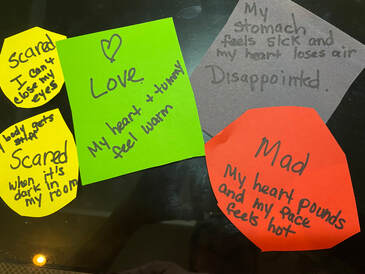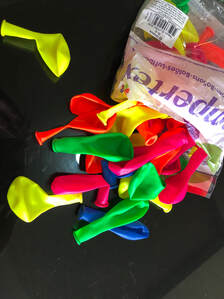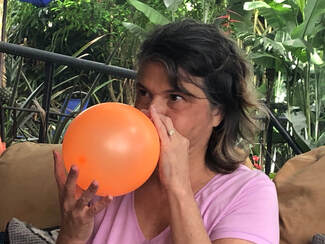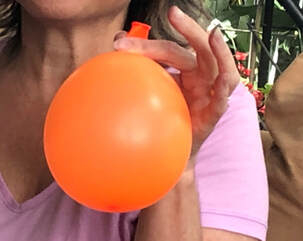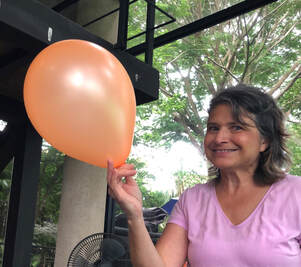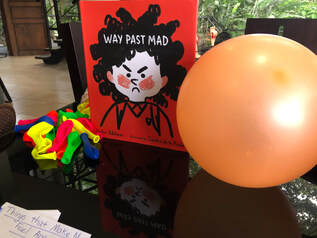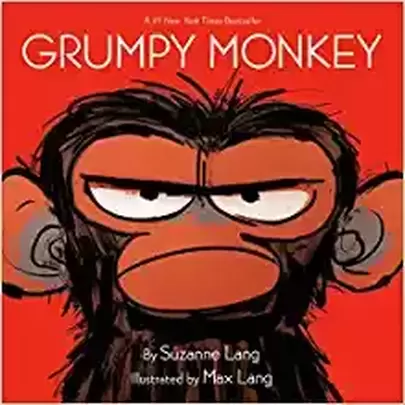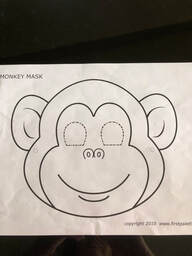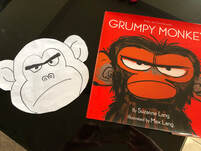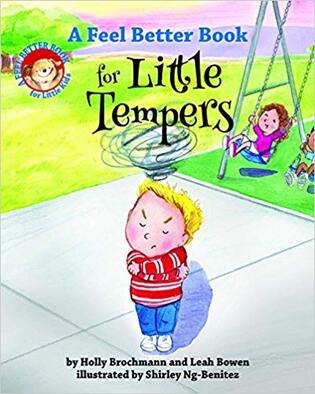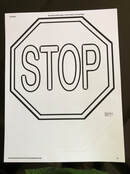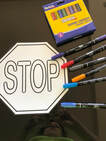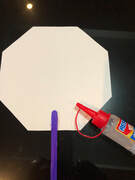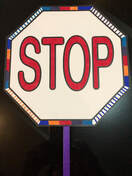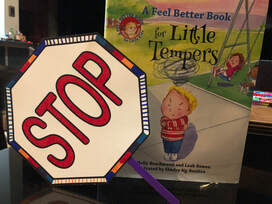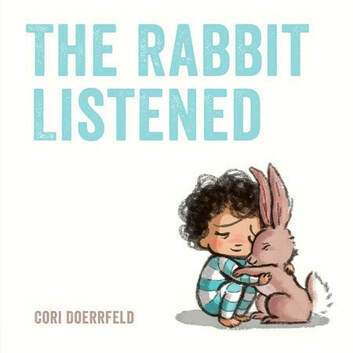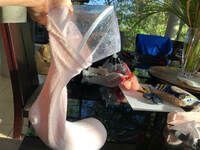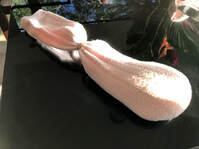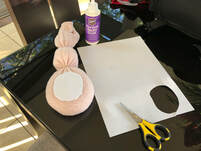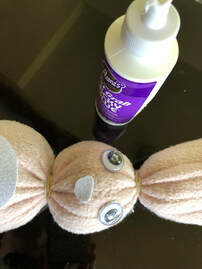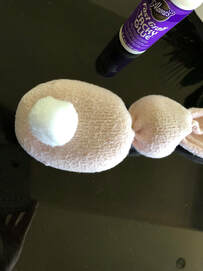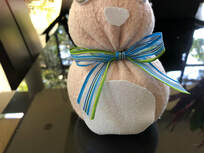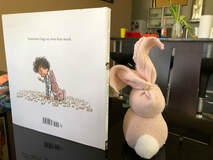A Book Review of The Strongest Thing
The book features a young girl, Sera, who finds her home a hard place to be due to her Dad's problems with anger control. He raises his voice and blames his family for things in which they have no control. At the height of his anger, he leaves the house and slams the door so hard, that the glass breaks. This is scary for Sera and creates anxiety as she anticipates what will happen when he returns. Sera thinks of her dad as "the strongest thing," because his anger seems so big, it fills up the house. So big, in fact, that, "...my house looked too small for me to fit back inside it." However, in contrast when approaching her school, Sera describes it as, " ...a shining castle on the hill, big and bright and cheery." The contrast in her description between her house and her school, shows us that Sera experiences her school as a haven. The familiar people and routines are comforting to her, and elevate her mood. The school day distracts her from thinking about the scary things at home. However, when the teacher announces that the school day is half over, Sera's mood takes a nose dive. She becomes angry and those sensations in her body, that she experienced during the incident with her father, return. "My shoulders sank like a ship, and my belly squirmed with worry." Ms. Adelman not only focuses on Sera's feelings, but the specifics of how that feeling affects her body. These sensations are described using similes which provides a clear mental picture for the reader to fully understand what Sera is experiencing. In order to name and recognize our feelings, we need to develop the skill of tuning into our bodies. This allows us to recognize those feelings through the sensations we're experiencing. After stomping around with her anger, Sera seemed to be calming herself by painting. A classmate then accidentally slams the door and startles her. It reminds her of the door slam and broken glass at home. When this happens, her painting gets ruined and she begins to act "like the bully at home," -blaming, yelling, pointing, seething. Her feelings were so big, that she felt like "the strongest thing." After observing her classmate's emotional reaction to her behavior, she knew exactly how he felt. At that point, Sera realizes that BIG ANGER was NOT the strongest thing. She then apologized, wishing her Dad would do the same for her. After the incident, she feared the worst from the teacher. However, he responded with kindness and support, which is an excellent model for teachers reading this book. His reaction also served as a model for the students, as they then offered support too. Due to the other's reactions, Sera learned that "the strongest thing" is actually being calm and kind. The last page of the book leaves the reader with a powerful message. The teacher and the mother are together in the classroom offering support to Sera. The teacher approached this situation as a team player with the parent. He did NOT call or send a note home about Sera's poor behavior. He solicited the parent to come in and assist him in supporting Sera. Care and compassion in place of punishment. Beautiful. A great message for teachers, parents and kids. There are so many important mental health messages portrayed in this book. However, I'm going to zoom in on the importance of emotional regulation in children AND adults. Adults who cannot regulate their feelings, especially their anger, create cycles of trauma in families. One of the most important things to begin learning as a child and throughout one's life is to regulate your emotions. If this skill is not mastered by adulthood, it will negatively affect a person's relationships, family, jobs, and overall happiness. Then, without the proper modeling and teaching, the cycle continues with their children. This is the reason why it is crucial to teach our kids about the different emotions, how they feel in their bodies, what makes them feel that way, and what coping skills work for them. Kids need to be allowed to express their feelings openly when younger, so when they are adults, they will have had much experience at managing them. By doing this, the trauma will not pass on to another generation. Both men and women can have problems with emotional regulation, however, anger control issues are more prevalent in boys and men. The reason for this is that traditionally, anger has been the only emotion that boys have been allowed to express. It is the emotion that is considered more "manly." Even now in 2022, some boys are still getting the message, "big boys don't cry," or "you're acting like a girl," when expressing any emotion besides anger. By keeping all of the feelings besides anger inside - sadness, hurt, disappointment, fear, etc.- those feelings get wrapped up in one big package called ANGER and that anger grows exponentially inside them. For this reason, we need to teach our boys about ALL OF THE FEELINGS. and ALLOW, AND EVEN ENCOURAGE THEM, TO EXPRESS THEM OPENLY. By doing this, they can practice coping and regulating, so by the time they are adults, they will be experienced emotional regulators. Then, and only then, will they grow up to be men who don't continue the cycle of anger and perpetuate trauma in their families. Instead, they will act as models for their children for dealing with emotions appropriately. That is the cycle we want to perpetuate. If, as a society, we understand that expressing and understanding all of the feelings makes us stronger, not weaker, the more homes like Seras' will have plenty of room for love and happiness. If you wish to purchase this book, or check out the many other mental health books written by this author, visit Hallee Adelman's website HERE. An Activity Idea for The Strongest Thing MY HOUSE IS LIKE A SANDWICH Sera describes her house "like the middle of an old sandwich, squished and dark and icky." For this month's activity, we're going to use this simile, make a sandwich and have the child fill it with the feelings in their house. NOW, LET'S BUILD OUR OWN SANDWICH! Materials: -White or beige cardstock or construction paper -Construction paper in many colors -pencil -scissors -brown and black markers
6 Comments
A Book Review of Way Past Mad
Ms. Adelman has written four books in this series to-date, focusing on different feelings presented in a child's-eye-view. The book that I am focusing on in this month's blog is Way Past Mad, which, of course, focuses on anger. However, most feelings don't stand alone. They are often intertwined with others and this can make it difficult to fully understand what is going on in ourselves and others. It is important to teach children that we can have many feelings at the same time. If we pay close attention to the story, we will see examples of these intertwined feelings. To take a deeper dive into the intertwined feelings, check out the activity below. This book is appropriate for children ages 3 to 8, and can even be helpful to many of us adults! Way Past Mad normalizes anger and presents the feeling in a very relatable way for children. Prior to leaving for school one day, Keya experiences a series of events that make her feel "WAY PAST MAD!" These experiences include her brother, Nate, messing up her room, feeding her favorite cereal to their dog, and ruining her favorite hat. This is followed by her mother's rationalization of these offenses that Nate is only little, "he didn't mean it." What child with siblings cannot relate to that?! In some ways, Keya presents as a model to the readers as she is able to verbalize her feelings, as shown in the following excerpt: "I was way past mad the kind of mad that starts and swells and spreads like a rash." And, spreading like a rash it did! She took her MAD out on her friend, Hooper. She did what many of us can relate to in the heat of the moment, and said things to Hooper that she really didn't mean. Then, Hooper caught her MAD. This MAD BUG could have spread like the Coronavirus! However, Keya recognized it and made an effort to correct the situation and get past her mad. She apologized to Hooper and shared why she had been so mad. This helped Hooper get past his mad too and that put an end to that dreaded MAD BUG, that could have spread around the whole school! This part of the story has many messages. One being that if we handle our anger inappropriately and take it out on others, there are real life consequences. However, it also normalizes the fact that sometimes we don't handle our feelings well and that we are not infallible. When the latter happens, we can take responsibility for the damage we caused and make amends. Also, talking to someone about what has given you the big feelings can help diminish those feelings and build your relationship, rather than damage it. The illustrations in the book, created by Sandra de la Prada, are bold and colorful. The facial expressions clearly represent the strong feelings of the characters. The large images and fun drawings draw children into the story. I recommend this book, and the other books in the series, as a means of helping children improve on this complex task of understanding and expressing their emotions appropriately. To purchase this book and check out the other books in this series, click here. I reviewed a different book by Hallee Adelman in September, 2020, My Quiet Ship, which you can check out in the archives of this blog. I have provided a therapeutic activity idea below that goes along with the theme of this book. Activity Idea for Way Past MadTo dive deeper into the feelings of this book, explore with the child the other feelings, besides anger, that the characters might be feeling. For example, when Nate messed up Keya's room, what other feelings might she be having? Maybe, frustrated, annoyed, etc. Also, when her mom made excuses for her brother, could she have felt jealous of her brother or sad that he mom didn't acknowledge her feelings? Do this throughout the book, even with Hooper. Try to pull out more complex feelings such as frustration, jealousy, disappointment, etc. I have found that kids need more practice with these more specific emotions that can be intertwined in the basic feelings. Also, start a discussion on what Keya did well and not so well in dealing with her feelings. What could she have done differently? What helped the situation? On to the activity . . . Materials needed: Balloons in multiple colors Paper Pen
A Book Review of Grumpy Monkey
-with constant togetherness, major changes in routine, boredom, fewer emotional and social outlets, worry about the future, money issues, etc., I would venture to guess that grumpy monkey business is now at an all-time high! In other words, it is likely that we are all going bananas! For that reason, I have decided to review the Grumpy Monkey book this month for all of you "grumpy monkeys" out there (well, and here too!) Grumpy Monkey is a New York Times bestselling picture book that addresses that vague, all-the-big-feelings-at-once mood of GRUMPINESS. Jim Panzee had a day where nothing felt quite right. His jungle friends noticed his grumpiness, but Jim was in denial and insisted repeatedly, "I am not grumpy!" They pointed out his body language that showed otherwise. Marabou said, "You're all hunched," so Jim straightened his body. Lemur noticed that Jim's eyebrows were all bunched up and snake noticed a frown on Jim's face. Jim changed his body language, but the jungle friends knew that he was pretending. Even though he was trying not to look grumpy on the outside, Jim still felt grumpy on the inside. However, Jim still insisted that he was NOT grumpy. Sound familiar? Many times we don't notice ourselves feeling or acting grumpy. Children, as well as adults, tend to deny being grumpy when its pointed out. But grumpiness not only affects ourselves, but those around us, and sometimes it's even catchy! Grumpiness is often so many feelings lumped together into one that it is difficult to recognize in ourselves and even more difficult to pinpoint the cause. The animals couldn't understand why Jim was grumpy because it was such a beautiful day. The jungle friends tried to cheer him up, suggesting a mountain of ideas, but Jim didn't feel like doing anything. All of their suggestions were things that made his friends feel happy, but not Jim, especially not on this day. The efforts of his friends became increasingly annoying and Jim reached his limit. Finally, his mood escalated further and he went BANANAS, screamed at the top of his lungs, "I AM NOT GRUMPY!" and stormed off. After feeling bad for yelling at his friends and noticing that his friend, Norman, had become grumpy too, Jim finally accepted that he was grumpy. Accepting that feeling for himself, and his friends acknowledging his feeling, when he was ready, was all he really needed to start to feel a little better. In this book, Suzanne Lang promotes social-emotional learning by showing children the importance of reading other's body language. Another important emotional lesson is that sometimes cheering up is not what we need. Sometimes, we just need to feel grumpy and for that to be okay. Accepting your own and acknowledging other's feelings, when they are ready, can go a long way in being able to sit with your feelings and start to feel better. The illustrator, Max Lang, does a beautiful job portraying the distinct facial expressions and body language of Jim and his jungle friends. The illustrations are vivid and fun, adding to the enjoyment of the story. Suzanne and Max Lang have created a series of Grumpy Monkey books that are equally enjoyable. Check them out at https://www.penguinrandomhouse.com/authors/222967/suzanne-lang. Below I have an activity suggestion to go along with the book! Activity Idea for Grumpy MonkeyWe are going to make a Grumpy Monkey mask, so your child can hold it up when he/she is feeling grumpy and doesn't want to be bothered. They may even lend it to you, or other members of the family, when they notice you are having a grumpy day. Maybe it will help lighten the mood! Materials Needed: -printed copy of monkey face from this link https://www.firstpalette.com/pdf/monkeymask.pdf -black marker -scissors -crayons -glue -tape -paper plate -craft stick or straw
Welcome back to my blog for 2020!!! First things first. It is my Blog Birthday this month! It has been one year since I started this new endeavor. In honor of my Blog Birthday, I have christened my blog with the name of "Psyched Writer." This seemed appropriate for my overall website and the content of my blog. Why, you ask? I am super PSYCHED about reading, writing and reviewing Children's books with PSYCH content. My background is in PSYCH and I am super PSYCHED that you have joined me on this adventure. Please comment below if you have any comments or ideas for blog posts in 2020. Thanks for being here! Now, moving on to the first post of 2020 . . . A Book Review of A Feel Better Book for Little Tempers
However, eventually children need to get ahold of those BIG feelings and learn to regulate themselves and express those feelings in more socially acceptable ways. If they don't, they will likely have a lifetime of struggles. That is where our job as parents, therapist and teachers comes in. This book, A Feel Better Book for Little Tempers, is a great tool to help us with what seems like, at times, an insurmountable task. The sing-songy rhyme and fun, simple, writing style make this book appropriate for even the youngest of temper throwers! My favorite thing about the structure of this book is that it uses the point of view of what writers(and actors) call "breaking the fourth wall." This means that the authors are talking directly to the reader. This technique draws children into the story and encourages them to participate. This writing style is very useful for this book as it encourages children to talk about their anger and practice the calming techniques. This book is appropriate for young children ages 3 - 6. The illustrator, Shirley Ng-Benitez, has created colorful, vivid illustrations that also pull the youngest readers into the book. The feel of the illustrations are calming, but active, which is exactly what needs to be expressed through this book. She created strong facial expressions on the characters which will help young readers with the important skill of recognizing feelings on others. Through this book, Holly Brochmann and Leah Bowen, have done a wonderful job in covering all the bases of helping children with their angry feelings. The following concepts are covered in the book: 1. A description of what it may feel like in your body when you are angry. "...your ears are quite hot and your cheeks are all red." 2. A definition of temper with very helpful illustrations that further clarify the explanation. 3. Examples of specific behaviors the child may use to express their angry feelings. "You try stomping your feet, maybe a scream or a shout..." 4. Validation and normalization of the feelings of anger. "...It's not only you who has tantrums to throw." 5. Age appropriate suggestions of calming techniques, including movement, sensory pressure (giving yourself a hug), muscle relaxation, deep breathing, etc. The suggestions include physical activity along with imagery which is very useful. A Feel Better Book for Little Tempers reinforces that it is okay to get angry if you know how to express it appropriately. It is written in a gentle, supportive manner that gives little ones the message that they are not alone with their anger and an adult is there to help them. "...Let's practice together, just you and I." The authors empower young readers with the message that they have the ability to take charge of their anger. It shows a sense of pride among the children in the book when they practice the skills. The child likely will not be receptive to this book in the throws of a temper. We sure don't want the book to go flying across the room or have pages ripped out! My suggestion in utilizing this book is to read it regularly when the child is calm. Therefore, when the child does become angry, they are prepared and familiar with what to do. Reminding them and working with them when angry on the strategies presented in this book will go much better if they have the knowledge behind them. With all the above in mind, there is one crucial technique in helping a child with BIG feelings. That is to name the feeling(s), help the child explain why they are having that feeling, and validate it. This simple technique goes a long way in helping to calm little ones and to teach them about their feelings. By the way, this is very helpful for adults as well! The book includes a Note to Parents and Caregivers which is very thorough and helpful in understanding and dealing with a child's temper. I have included an activity below to reinforce the concepts in this book. To learn more about these authors and other Feel Better Books in this series, check out this link to read an interview. https://maginationpress.apabooks.org/?p=1254 Activity Idea for A Feel Better Book for Little TempersThis book provides valuable strategies for young readers to help control their BIG feelings. It will be helpful for the adult to practice these strategies together with the child often. It is also a great idea to model using these strategies in front of your kids when you, yourself, become angry. A technique I have used often in my practice with young children is to utilize role playing techniques to practice important skills. This is like "pretending" and very enjoyable for young children. But first, we need to make a visual aid together. Materials Needed: Stop sign template http://www.supercoloring.com/coloring-pages/stop-sign Sturdy card stock paper Scissors Markers or crayons Glue craft stick Role Playing Exercise
1. Let the child know that you'd like to play a game of pretend. 2. Tell the child that you are both going to take turns pretending to make the other person angry and practice how to handle your anger. 3. The adult starts and, for example, may give the child a toy and then grab it away from them. 4. The adult holds up the handmade STOP sign in front of the child (Giving the message that you stop and think first before reacting). 5. The adult then says "How are you feeling?" or "How did that make you feel?" 6. For younger children you may have feeling pictures nearby so they can choose. 7. Acknowledge their feeling(s) and state how it would have made YOU feel if it happened to you. Maybe ask if it ever happened to them before or tell them about a time that it happened to you and how it worked out. 8. Ask the child "Is it okay to feel that feeling?" "Would it be okay to hit me or call me names?" "Why not?" 9. The adult then asks the child "What can you do instead to calm yourself down?" Show them the options in the book as ideas if necessary. 10. Practice the skill they picked together. 11. Ask how they are feeling after you complete the practice. If they are still feeling angry, have them pick another technique from the book and practice that one together. 12. Provide much positive feedback to the child when practicing the techniques. 13. Now it's the child's turn to make YOU feel angry. Coach them through this. Make sure they hold up the stop sign for you after they make you angry. Handle it inappropriately at first (for example, you can yell or say "You're not my friend anymore!" so they can remind you what you can do. Practice the skill together. 14. Make it fun! A Book Review of The Rabbit Listened
Having a friend just sitting beside you through a tough time can be incredibly comforting and therapeutic. When the person chooses to talk, being with them is being there to listen. Just listen. When a friend or loved one is hurting, we have a tendency to want to fix it. We want them to be happy. We can't tolerate seeing them in pain. But sometimes in life, we just need to sit with our feelings for awhile. It can be deeply comforting to have someone you care about joining you in sitting with your feelings. This helps you not feel so alone. In her recent Children's book, The Rabbit Listened, Cori Doerrfeld describes the concept of "being with" beautifully. She presents the concept at a level very relatable to young children. This book is simple, yet powerful. While it is geared toward children ages 3- 7, we can all learn a great deal from this book. The story starts out with Taylor, a young girl, building a very special tower out of blocks that elicits much pride. Out of nowhere, a flock of birds fly by and knock down her prized castle. Her creation is ruined. Ugh. The dreaded experience that evokes big feelings familiar to all children. Ms. Doerrfeld does an amazing job illustrating Taylor's strong feelings. As expected, a parade of well-meaning friends come and want to help Taylor. Chicken tries to make her talk, Bear tries to get her to growl and shout and elephant tries to help her rebuild. Taylor is not interested in any of this. Many other friends come by to try and make it better for Taylor. Nothing works. Until finally and quietly... Rabbit slowly comes up and sits very close to Taylor so she can feel his warm body. The Rabbit sits in silence by her side. He listens when she feels like talking, or shouting, and listens closely to all of her ideas. After Taylor goes through the process of working through her feelings at her own pace, she decides to rebuild. At that point, Rabbit is still by her side sharing her joy of being ready to rebuild. The Rabbit Listened is helpful to ALL children(parents, therapists and teachers too!) This book is a frequent go-to in my practice with children who have difficulty regulating their emotions. It provides insight to these children as to what they may need to calm themselves. The book also provides insight to their caregivers as to how to manage their child's big feelings. Additionally, I utilize this book for kids that have recently gone through big struggles in their life, whether it be a death or a separation in the family. In addition to gaining personal insight, this story teaches children how to be a good friend and to help others who may be struggling. The Rabbit Listened covers a universal topic that can remind us all that simply "being with" someone is the best gift you can give. After reading the book, why not create a Rabbit who will sit quietly and listen to you? Or that you can lend to your family members or friends when they are struggling? See below for instructions. Activity Idea for The Rabbit ListenedMaking a sock bunny together with the child and discussing how the bunny can sit beside him/her when he/she is having big feelings is a great therapeutic activity. They can also talk to the bunny about their big feelings. The bunny is simply there to sit and listen. The bunny can also be used for them to help other people and lend him out as a sitting buddy to a family member or friend who is struggling. To drive the concept home, I do role playing in therapy, having the child pretend they are sad, mad, or scared and setting the bunny quietly next to them. As the therapist, I pretend to have big feelings and the child then places the bunny next to me. We then discuss how it feels to have someone next to you, sharing your big feelings and listening. We also discuss situations that have occurred in their life when it would have been helpful to have someone sit by their side quietly. We discuss situations their family or friends may have experienced that they think would have been helpful to sit quietly by their side and how this might make them feel. Materials needed An adult-sized sock 2 cups of rice measuring cup with spout 2 large sturdy rubber bands felt or foam sheet large pompom googly eyes ribbon tacky craft glue sharp scissors
|
Follow me on Twitter, Pinterest and LinkedIn
Categories
All
|
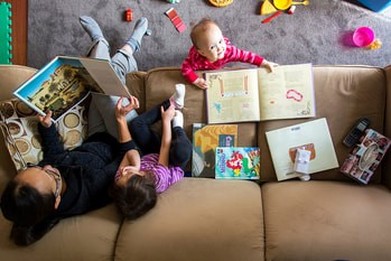
 RSS Feed
RSS Feed
